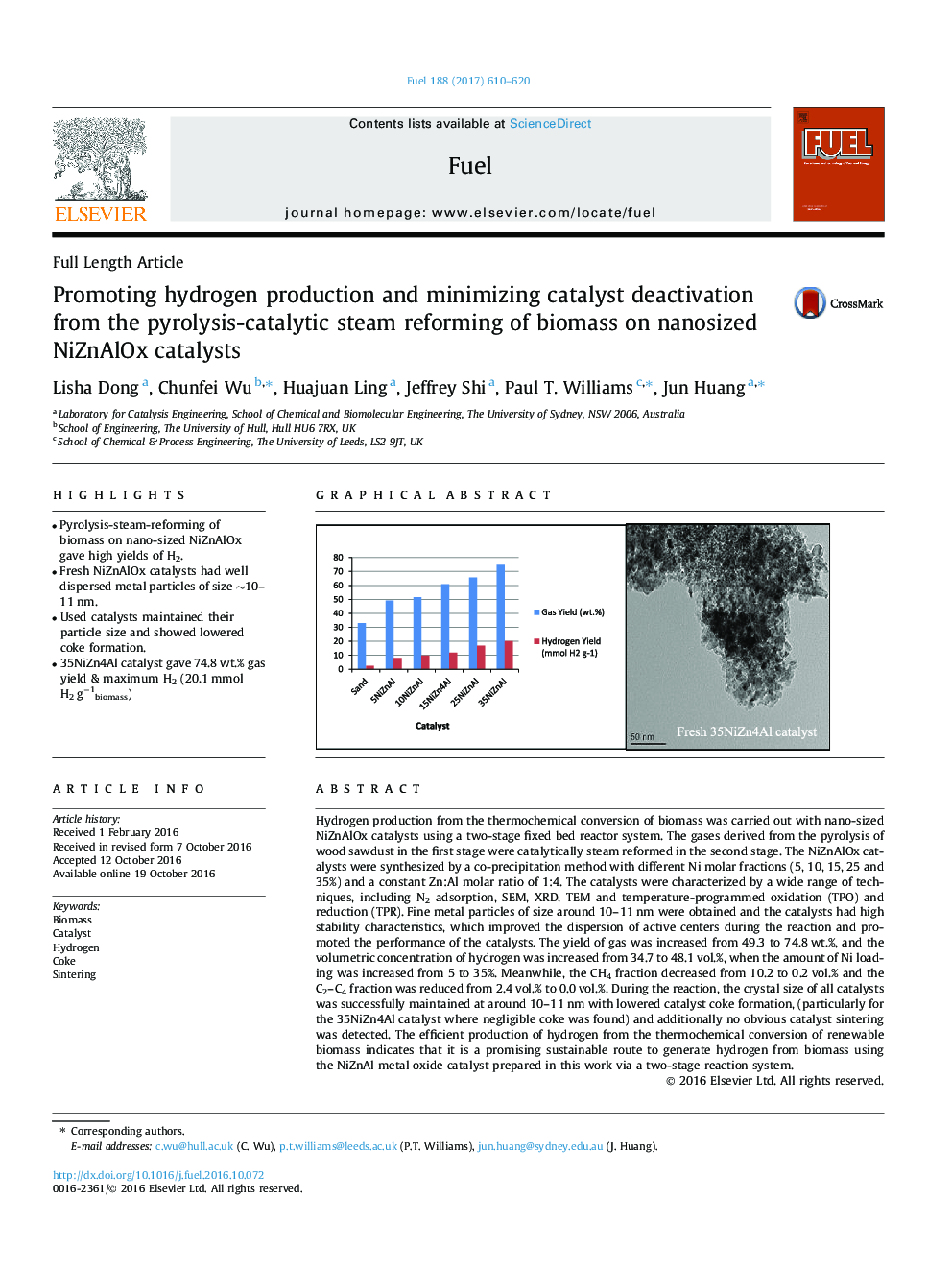| کد مقاله | کد نشریه | سال انتشار | مقاله انگلیسی | نسخه تمام متن |
|---|---|---|---|---|
| 6475882 | 1424976 | 2017 | 11 صفحه PDF | دانلود رایگان |

- Pyrolysis-steam-reforming of biomass on nano-sized NiZnAlOx gave high yields of H2.
- Fresh NiZnAlOx catalysts had well dispersed metal particles of size â¼10-11Â nm.
- Used catalysts maintained their particle size and showed lowered coke formation.
- 35NiZn4Al catalyst gave 74.8Â wt.% gas yield & maximum H2 (20.1Â mmol H2Â gâ1biomass)
Hydrogen production from the thermochemical conversion of biomass was carried out with nano-sized NiZnAlOx catalysts using a two-stage fixed bed reactor system. The gases derived from the pyrolysis of wood sawdust in the first stage were catalytically steam reformed in the second stage. The NiZnAlOx catalysts were synthesized by a co-precipitation method with different Ni molar fractions (5, 10, 15, 25 and 35%) and a constant Zn:Al molar ratio of 1:4. The catalysts were characterized by a wide range of techniques, including N2 adsorption, SEM, XRD, TEM and temperature-programmed oxidation (TPO) and reduction (TPR). Fine metal particles of size around 10-11Â nm were obtained and the catalysts had high stability characteristics, which improved the dispersion of active centers during the reaction and promoted the performance of the catalysts. The yield of gas was increased from 49.3 to 74.8Â wt.%, and the volumetric concentration of hydrogen was increased from 34.7 to 48.1Â vol.%, when the amount of Ni loading was increased from 5 to 35%. Meanwhile, the CH4 fraction decreased from 10.2 to 0.2Â vol.% and the C2-C4 fraction was reduced from 2.4Â vol.% to 0.0Â vol.%. During the reaction, the crystal size of all catalysts was successfully maintained at around 10-11Â nm with lowered catalyst coke formation, (particularly for the 35NiZn4Al catalyst where negligible coke was found) and additionally no obvious catalyst sintering was detected. The efficient production of hydrogen from the thermochemical conversion of renewable biomass indicates that it is a promising sustainable route to generate hydrogen from biomass using the NiZnAl metal oxide catalyst prepared in this work via a two-stage reaction system.
201
Journal: Fuel - Volume 188, 15 January 2017, Pages 610-620